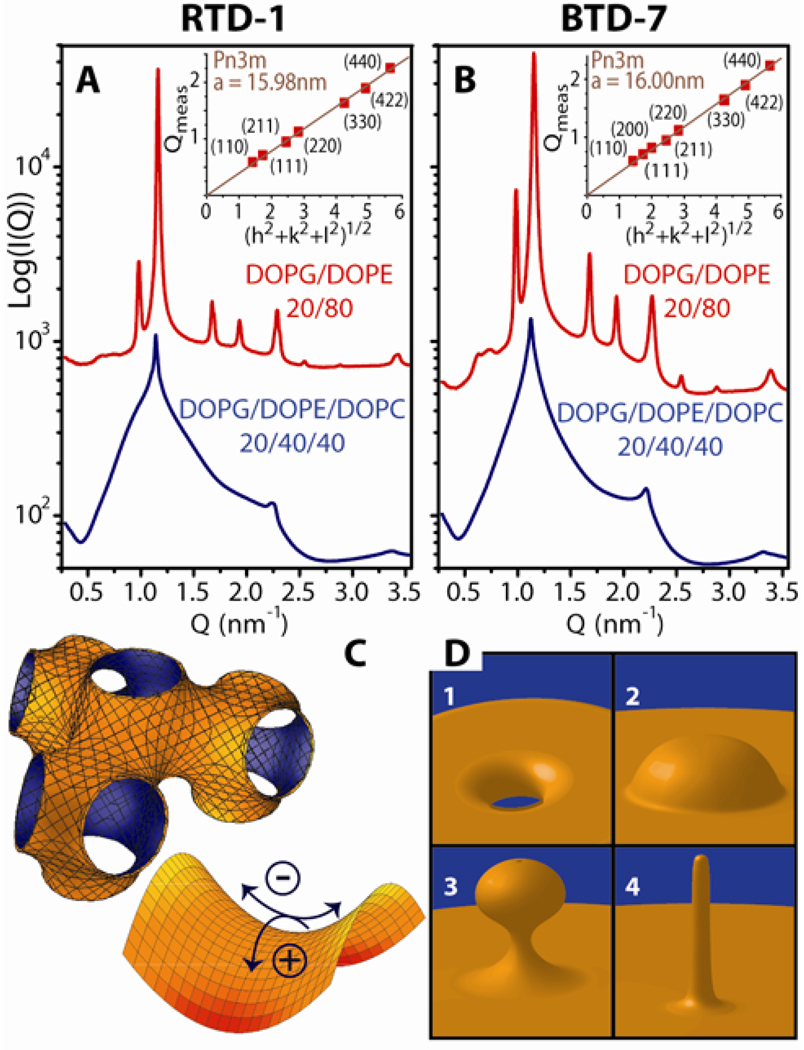Figure 1.
Generation of negative Gaussian curvature by θ-defensins is dependent on membrane PE concentration. At peptide to lipid molar ratio, P/L = 1/30, both RTD-1 (A) and BTD-7 (B) θ-defensins, induced a Pn3m cubic phase in SUVs with lipid compositions mimicking the cell membranes of Gram-negative bacteria, DOPG/DOPE = 20/80, but not in membranes with reduced amounts of negative intrinsic curvature lipids, DOPG/DOPE/DOPC = 20/40/40. Insets in A&B show indexation of the Pn3m cubic phase by agreement between the measured peak Q positions and the Miller indices h, k, l, with relationship Qmeas = 2π√(h2+k2+l2)/a, for a cubic phase with lattice parameter, a. (C) (upper left) Illustration of the Pn3m cubic phase. The surface at the mid-plane between bilayer leaflets has zero mean curvature and negative Gaussian curvature at every point. (lower right) Negative Gaussian curvature requires positive curvature (+) in one direction and negative curvature (−) in the perpendicular direction to locally produce a saddle shape. (D) Diagrams of different manifestations of saddle-splay curvature in the interior of a pore (1) and at the base of blebs (2), buds (3), and rod-like projections (4).

